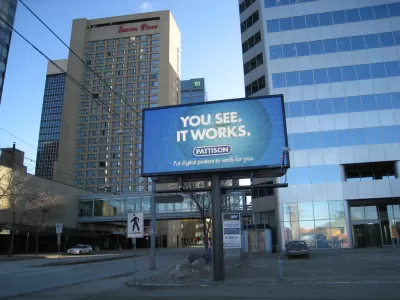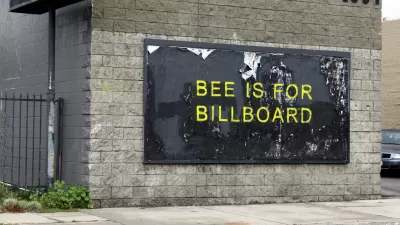Overruling an earlier appeals court decision, the New Jersey Supreme Court has found one township's prohibition on digital billboards to be unconstitutional.

Brian J. Connelly, writing in the Rocky Mountain Sign Law blog, reports that a September ruling [pdf] by the New Jersey Supreme Court has found that an attempt to prohibit a digital billboard by Franklin Township is unconstitutional. The case revolved around the township's rejection of a proposal to install a digital billboard adjacent to a nearby interstate highway. Because the township had allowed static billboards in the same vicinity, the applicant sued, with the case eventually coming before the State Supreme Court. The court found that the rejection of the digital billboard was content neutral, however the township had failed to provide supporting evidence on why the digital billboard was less aesthetically attractive and more dangerous than the static signs.
...the court found that the township provided “no basis to discern how three static billboards are more aesthetically palatable than a single digital billboard.” The court also found that the township’s staff planner failed to identify specific literature regarding the safety of digital billboards and that the township’s recitation of traffic crash data near the site of the proposed digital billboard did not do a sufficient analysis of causation of crashes. In the course of its discussion of the analysis performed by the township, the Supreme Court referred to “a record founded only on unsupported suppositions, fears, and concerns,” and stated that a “more robust factual record in support of the cited government interests deemed substantial” might pass constitutional muster.
FULL STORY: New Jersey Supreme Court: Digital Billboard Ban Unconstitutional

Study: Maui’s Plan to Convert Vacation Rentals to Long-Term Housing Could Cause Nearly $1 Billion Economic Loss
The plan would reduce visitor accommodation by 25,% resulting in 1,900 jobs lost.

North Texas Transit Leaders Tout Benefits of TOD for Growing Region
At a summit focused on transit-oriented development, policymakers discussed how North Texas’ expanded light rail system can serve as a tool for economic growth.

Why Should We Subsidize Public Transportation?
Many public transit agencies face financial stress due to rising costs, declining fare revenue, and declining subsidies. Transit advocates must provide a strong business case for increasing public transit funding.

How Community Science Connects People, Parks, and Biodiversity
Community science engages people of all backgrounds in documenting local biodiversity, strengthening connections to nature, and contributing to global efforts like the City Nature Challenge to build a more inclusive and resilient future.

Alabama: Trump Terminates Settlements for Black Communities Harmed By Raw Sewage
Trump deemed the landmark civil rights agreement “illegal DEI and environmental justice policy.”

Dear Tesla Driver: “It’s not You, It’s Him.”
Amidst a booming bumper sticker industry, one writer offers solace to those asking, “Does this car make me look fascist?”
Urban Design for Planners 1: Software Tools
This six-course series explores essential urban design concepts using open source software and equips planners with the tools they need to participate fully in the urban design process.
Planning for Universal Design
Learn the tools for implementing Universal Design in planning regulations.
City of Santa Clarita
Ascent Environmental
Institute for Housing and Urban Development Studies (IHS)
City of Grandview
Harvard GSD Executive Education
Toledo-Lucas County Plan Commissions
Salt Lake City
NYU Wagner Graduate School of Public Service




























